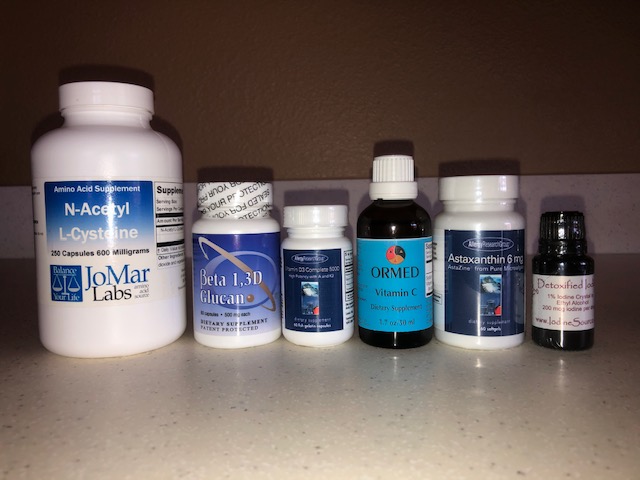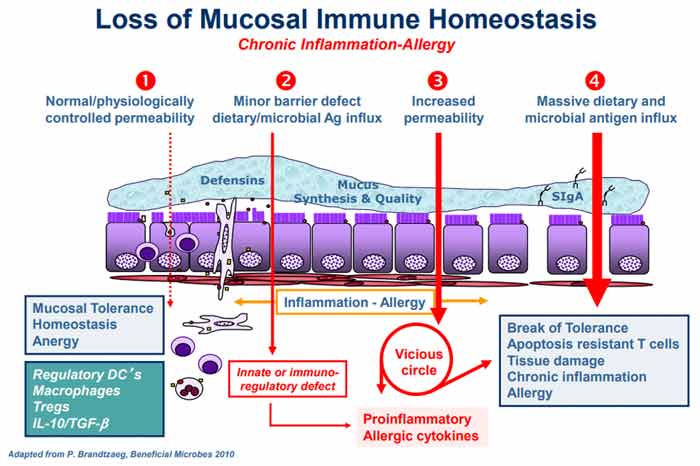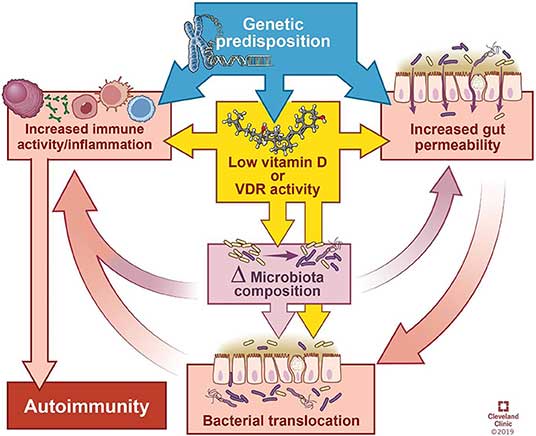HEALTH STARTS IN YOUR MOUTH
- Your teeth are organs that are connected to your nervous system via the trigeminal nerve, one of the 12 cranial nerves
- In his book, “It’s All in Your Mouth: Biological Dentistry and the Surprising Impact of Oral Health on Whole Body Wellness,” biological dentist Dr. Dominik Nischwitz presents a holistic treatment program for whole-body health and well-being
- Nischwitz has developed a Bone Healing Protocol that includes micronutrients such as vitamins D, C and K2, magnesium and B vitamins. Your vitamin D3 level should ideally be above 60 ng/mL for proper bone formation
- His holistic treatment plan includes removing or addressing oral interferences such as metal fillings, root canals and cavitations
- Cavities and resulting problems can be avoided altogether by following an optimized lifestyle program where you’re getting ideal levels of sun exposure and nutrition, and avoid toxins and certain dietary culprits such as gluten and dairy
In this interview, Dr. Dominik Nischwitz, author of “It’s All in Your Mouth: Biological Dentistry and the Surprising Impact of Oral Health on Whole Body Wellness,” discusses his “all-in-one” holistic treatment program, and why addressing your oral health can have far-reaching whole body benefits.
Nischwitz is a biological dentist, like his father before him, and has served as president of the International Society of Metal Free Implantology (ISMI) since 2019.
As a child, Nischwitz “was always a little bit sick” and was frequently treated with antibiotics for recurrent throat infections. At the age of 14, his wisdom teeth were extracted. Age 15 brought on appendicitis and severe acne, which were also treated with antibiotics for months at a time.
“I thought it was normal to be just a little sick and then a little healthy … Then they wanted to take out my tonsils when I was 16. My mom said, ‘Ah, let’s get a second opinion. Go to this naturopathic doctor’ … He tested me with kinesiology and … told me, ‘You’re just allergic to milk … This is an allergy.’
[Removing milk] helped. My tonsils are still in there and it took me a few more years to actually look into dentistry. I was [doing] civil service at a Red Cross as a paramedic … and you have to do an internship in the clinic.
Maybe it’s coincidence. They put me in dental clinic … I applied to university, made the cut, and started without knowing anything. Finally, I got interested [in health] … because at the same time, I was starting to work out. I just wanted to perform better.”
Following the advice given in a bodybuilding magazine, Nischwitz started eating 3,000 calories a day to gain mass. Little did he know all calories are not equal, and after a year of eating noodles and tuna, he’d gained 20 kilos (about 44 pounds), although it wasn’t all muscle.
“I didn’t know it was health that I was missing. I was just focusing on performance and of course muscle gain. Maybe it was just an aesthetic thing, but I learned everything I could about nutrition …
I tried every possible diet. I used every supplement. I was the guy in university who had his box of food always with him, not even knowing that it maybe was also too much carbs … But I learned a lot from this.”
Eventually, Nischwitz learned about the effects dental amalgam has on health, which “totally clicked with everything nutrition-wise” he was learning. “Every minute in my residency when I wasn’t drilling out amalgam fillings, I was searching the internet for stuff to remove, to detox, how the liver phases work, basically, everything possible,” he says. “I was really curious to find real solutions.”
The All-in-One Concept of Health
Nischwitz now focuses on what he calls an “all-in-one concept” of health, starting with the mouth.
“Your teeth are organs that are connected to your whole nervous system and basically are part of your brain, kind of like your eyes,” he says. “You have this massive brain nerve there called the trigeminal nerve. It’s one of the 12 cranial nerves and takes up 50% of the space of all the other ones, so it’s quite important.”
To get started, patients will send him their current panoramic X-rays, a medical questionnaire, and their vitamin D3 and LDL blood work to provide some basic knowledge of their health.
Next, the patient must be properly prepared through nutrition and other lifestyle changes. “It’s basically the same stuff you would do for a patient of every other functional medicine doctor. Go as natural as possible,” Nischwitz says.
His book contains two charts, one red and one green. The red chart describes common food intolerances and food toxins, and their alternatives. All patients are asked to go grain- and dairy-free. The green chart lists healthy carbohydrates, healthy fats and proteins to add to your diet.
Nischwitz has also developed a Bone Healing Protocol that includes certain micronutrients and focuses on high doses of vitamin D3. Vitamin D levels, for example, should ideally be above 60 nanograms per milliliter (ng/mL), and if your levels are low to begin with, you may need to take a supplement for several months before your treatments begin. The protocol also stresses magnesium, vitamin K2, vitamin C and B vitamins.
“So, they come into this health optimization week already immunologically boosted,” Nischwitz. “The nervous system is already very good. What we’re trying to achieve then is bring the patient from chronic sympathetic nervous system mode into parasympathetic [mode] …”
Removing Oral Factors That Interfere With Health
Nischwitz’s all-in-one treatment plan includes removing or addressing oral interference such as:
• Metal fillings — Mercury (amalgam) fillings (and all other metal restorations) are removed safely using specialized rubber dams and cleanup suction, as well as other parameters to ensure mercury vapors are not recirculated into the system, as this can lead to acute toxic overload. Patients will also receive a nasal probe and intravenous nutrients to assist with detoxification and healing.
• Root canals (replacing them with ceramic implants) — Root canaled teeth are extracted and the socket cleaned with ozone. Neural therapy is also used, along with platelet-rich fibrin (APRF) treatment.
“We draw blood before the surgery and spin it in the centrifuge to make APRF,” he explains. APRF contains stem cells and growth factors that are then placed into the empty socket or beside the zirconium dioxide implant, which has no metal oxides in it and is completely biocompatible.
On a side note, while few dentists are educated about this, there are ways to rescue an infected tooth, thus avoiding the need for a root canal in the first place. One method that appears to be very effective is sterilizing the infected root with a high-powered YAG laser, which combines both light therapy and acoustic sound therapy, along with ozone.
This has been shown to eliminate the need for a root canal in many cases. What Nischwitz is describing is the necessary rescue effort after a root canal has been performed.
• Cavitations — Cavitations is the layman’s term for fatty degenerative osteonecrotic jawbone (FDOJ) or chronic ischemic bone disease (CIBD). It’s also known as neuralgia-inducing-cavitational-osteonecrosis (NICO cavitations).
Cavitations at the back of your jaw left over from wisdom tooth extractions (or every other extraction site) can cause pain to radiate through your other teeth via the trigeminal nerve. Sometimes, patients end up getting a root canal in a painful tooth that really didn’t need it, as the pain actually was caused by a cavitation.
Aside from cavitations, Nischwitz points out that pain in a tooth could also be due to high blood sugar, low blood sugar, an overall change of pH level in your mouth, or a mineral deficiency.
After surgery, Nischwitz prepares a “food design” or “lifestyle concept” plan for each patient, based on body composition, metabolism and so on.
More Information
Nischwitz firmly believes cavities and resulting problems can be avoided altogether by following an optimized lifestyle program where you’re getting ideal levels of sun exposure, nutrition, and avoid toxins and certain dietary culprits such as gluten and dairy.
“This is why it’s so important that all this information comes out,” he says. “And that’s why I devoted a whole chapter to the nutritional part. Basically, biological dentistry, I would say, is an overlap of functional medicine, biohacking and high tech dentistry with the goal of optimal health. I’m a big fan of the basics, and the goal is [changing] the lifestyle …
Everybody talks about leaky gut, but nobody talks about leaky gum. The gum tissue, the gingiva, is the same tissue, it’s squamous tissue. And if you have a chronic gingivitis, for example, just from a lack of nutrients or maybe from the wrong [dental] restorations, you will have an opening into your system because the gingiva is outside.
Your bacteria cannot go really inside [the tooth], but if there’s an opening in the gum or if you have a titanium implant where the tissue doesn’t grow on top, you will always have a huge gap … and all these bacteria, mainly anaerobic bacteria, will travel into your system. This is basically leaky gum. [The problem] starts there, because the gut basically starts in your mouth.”
Nischwitz also stresses the importance of a natural birth (whenever possible) and breastfeeding, as this is really important for proper jaw formation. Breastfeeding requires far greater strength than sucking formula from a bottle, so sucking on the breast develops the lower jaw and muscles, and ensures the proper development of the baby’s palate.
“This is the fulfilling part for me — that I can help you optimize your health. And this is also the challenge that I put onto all my patients; they have to change their lifestyle. Otherwise, we don’t even accept them because then they won’t have good results.”
To learn more, be sure to pick up a copy of “It’s All in Your Mouth: Biological Dentistry and the Surprising Impact of Oral Health on Whole Body Wellness.” You can also find more information about Nischwitz’ practice on his website, DNA Health & Aesthetics. Other resources include his YouTube channel and Instagram.




